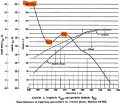I'm all for giving the US a gram, hell let's do one better and give them two grams, one from the surface sample and one from the drill sample.
I'm just saying, give it to them after a few years when/if relationship improve, and after all the papers have been published.
I'm just saying, give it to them after a few years when/if relationship improve, and after all the papers have been published.









